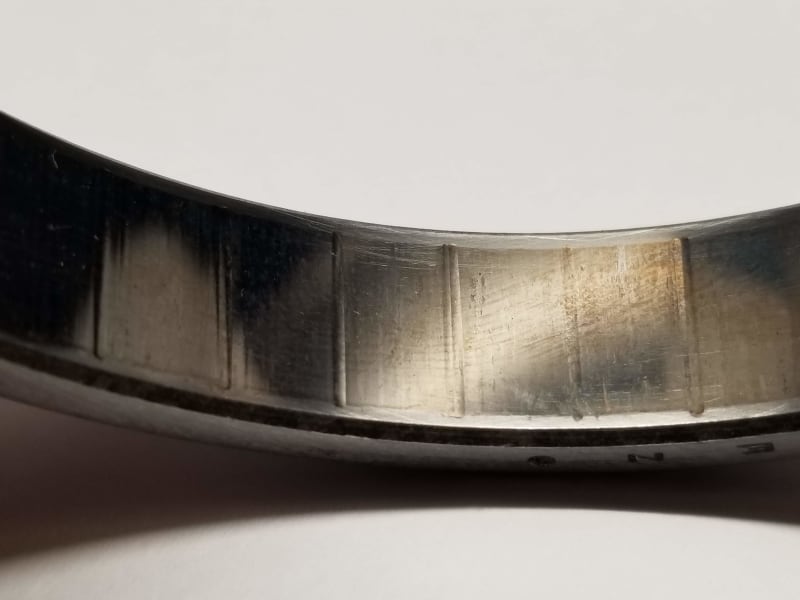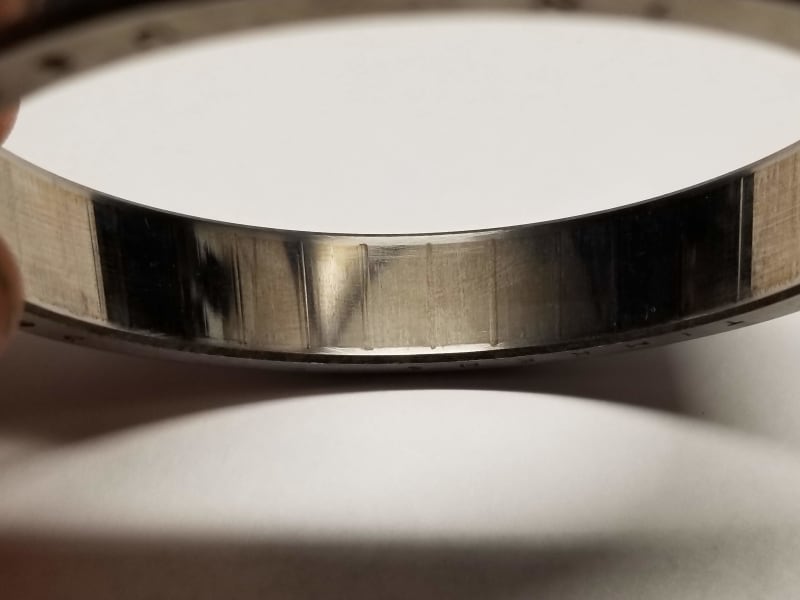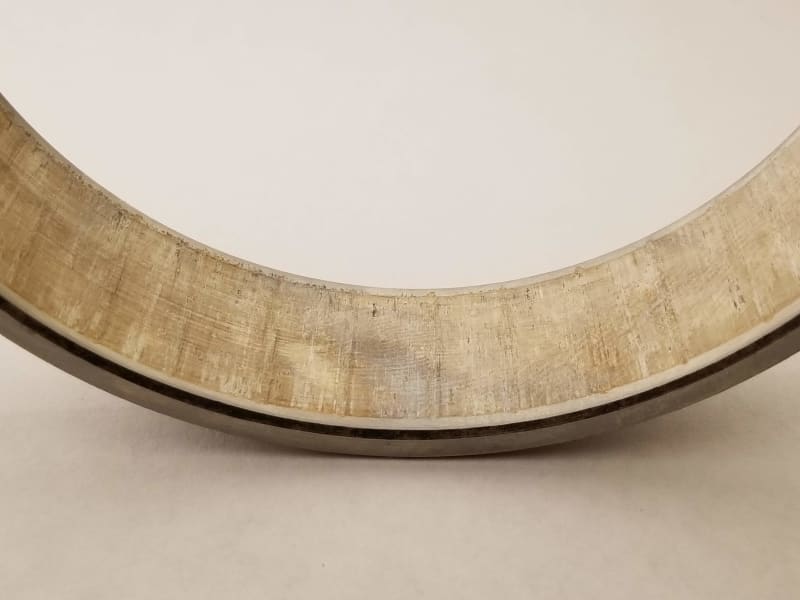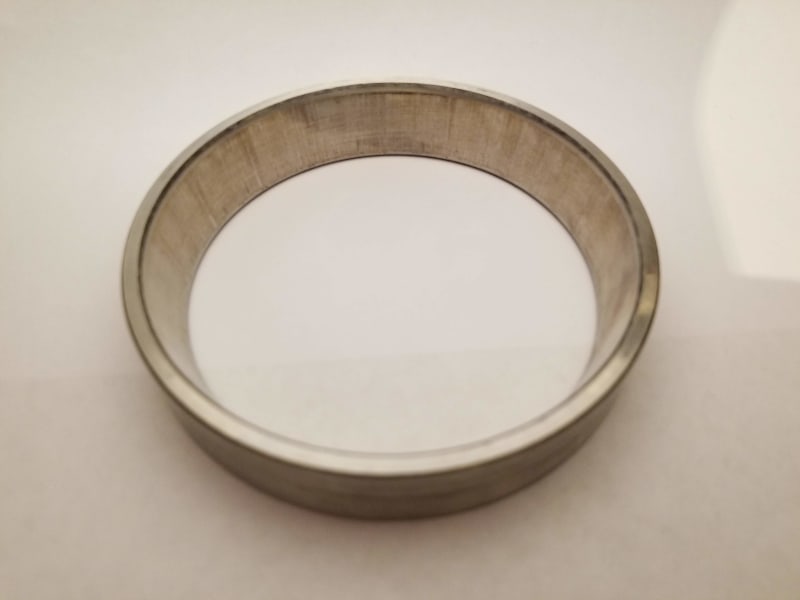Chris23692
Mechanical
- Dec 24, 2019
- 1
I recently purchased a 1944 Monarch 16" CY lathe and I discovered a bearing in it with the wear pattern below.
What are the likely causes of such wear? Vibration and inadequate preload when the bearings have no relative motion?
Upon disassembly the bearing was full of a thick, tar-like amalgamation of old grease and appeared to have not been lubricated regularly.
FWIW, the lathe has a drive clutch. When the lathe is performing work, the clutch is transmitting power and the bearings are not spinning. When the lathe is idle, the clutch is open and the bearings spin at ~1,000rpm. The bearing is a Timken 368/324A taper roller bearings. It's partner in the bearing pair has no unusual wear pattern.




What are the likely causes of such wear? Vibration and inadequate preload when the bearings have no relative motion?
Upon disassembly the bearing was full of a thick, tar-like amalgamation of old grease and appeared to have not been lubricated regularly.
FWIW, the lathe has a drive clutch. When the lathe is performing work, the clutch is transmitting power and the bearings are not spinning. When the lathe is idle, the clutch is open and the bearings spin at ~1,000rpm. The bearing is a Timken 368/324A taper roller bearings. It's partner in the bearing pair has no unusual wear pattern.




